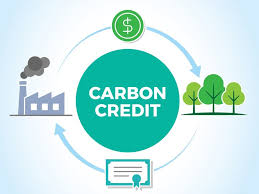As the global community faces the pressing challenge of climate change, innovative mechanisms are being developed to reduce greenhouse gas (GHG) emissions and promote sustainable practices.
Among these mechanisms, carbon credits have emerged as a pivotal tool. But what exactly are carbon credits, and how do they contribute to mitigating climate change? This article explores the concept, functioning, benefits, and criticisms of carbon credits.
A carbon credit represents a permit or certificate that allows the holder to emit one metric ton of carbon dioxide (CO2) or an equivalent amount of another greenhouse gas. These credits are part of cap-and-trade systems designed to limit total emissions by creating a market where companies can buy and sell the right to emit GHGs.
The primary goal of carbon credits is to incentivize reductions in emissions. Companies or entities that emit less than their allotted quota can sell their surplus credits to others, creating a financial reward for environmental stewardship.
Carbon credits can be broadly categorized into two types; Compliance Credits, used within regulatory cap-and-trade systems like the European Union Emissions Trading System (EU ETS) and Voluntary Credits, purchased by individuals or companies outside mandatory regulations to demonstrate environmental responsibility.
The carbon credit system typically operates under a cap-and-trade framework where governments or regulatory bodies set a limit (cap) on the total amount of GHGs that can be emitted within a certain period.
Entities receive or purchase allowances representing the right to emit specific amounts of GHGs. If a company reduces its emissions below its allowances, it can sell the excess credits to other companies that exceed their limits.
Companies can also purchase carbon offsets—credits generated from projects that reduce or remove GHGs, such as reforestation or renewable energy initiatives.
As the urgency to combat climate change grows, carbon credits are likely to play an increasingly important role in global strategies. Advances in technology, such as blockchain, could enhance transparency and accountability in carbon markets. Additionally, international agreements like the Paris Agreement provide a framework for expanding and refining carbon credit systems.
Carbon credits represent a powerful tool in the fight against climate change, providing economic incentives for reducing emissions and funding sustainability initiatives. While they are not a standalone solution, when integrated into a broader climate strategy, carbon credits can help drive the transition to a low-carbon future. For individuals, businesses, and governments alike, understanding and engaging with carbon credit markets is a vital step toward a sustainable planet.


